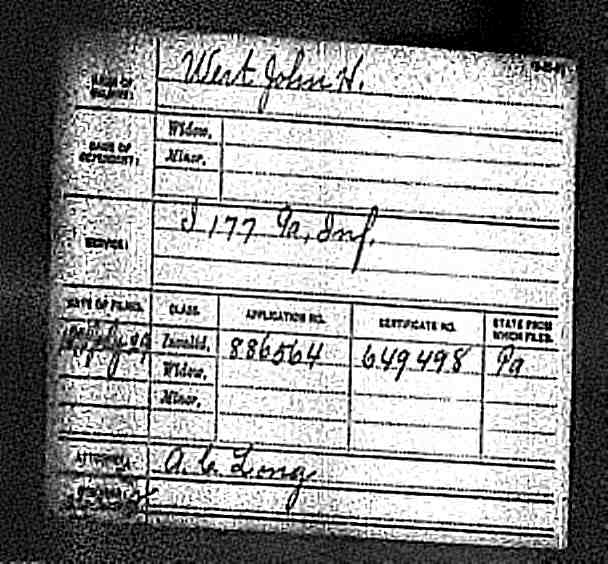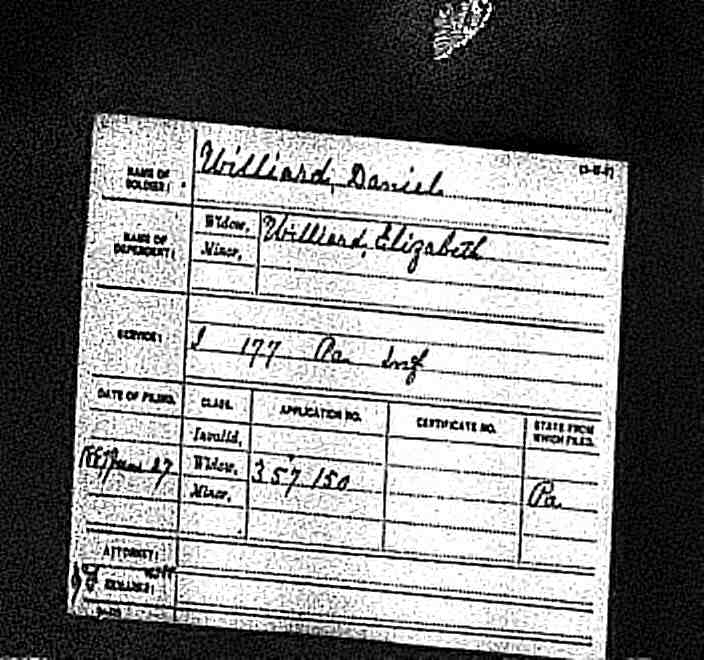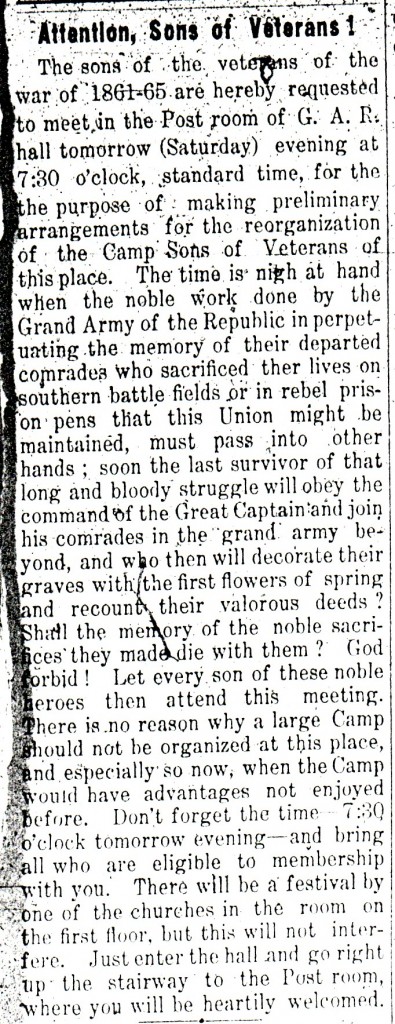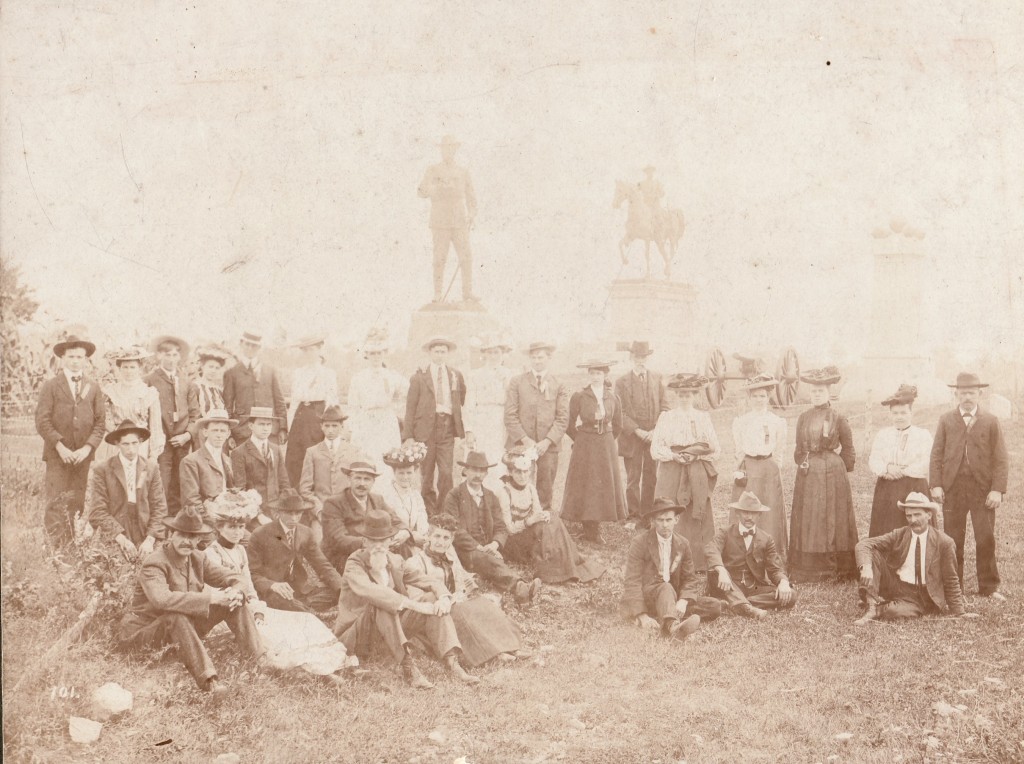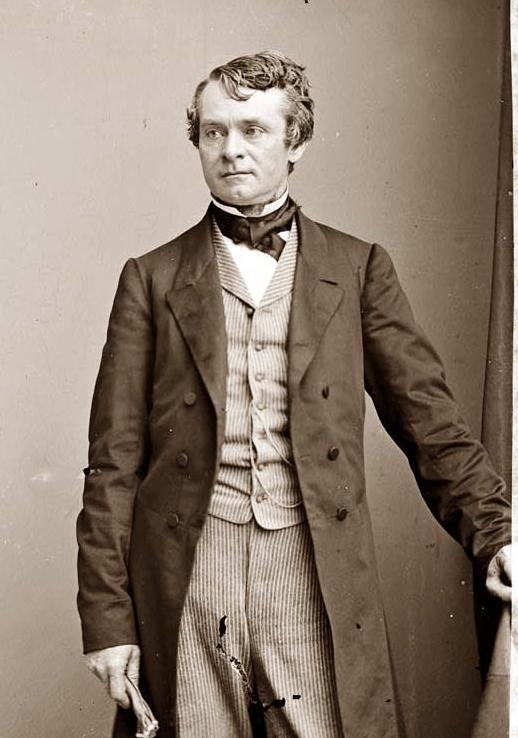Honorable Discharges – 177th Pennsylvania Infantry, Company I – Part 9
Posted By Norman Gasbarro on December 19, 2011
Today, the blog post again continues to feature members of the 177th Pennsylvania Infantry, Company I, who served the full term of nine months and received honorable discharges on 5 August 1863. The research results presented here are based on preliminary data gathering on each of the members of the company and searches for Pension Index Cards that reference the pension application files that are available at the National Archives in Washington, D.C. Some of the members of this company have been previously discussed on blog posts here and reference to those posts are provided with links.
In addition, much has already been written on Benjamin J. Evitts, the elected captain of this company (click here for previous posts on Benjamin J. Evitts). Click here for previous posts on the 177th Pennsylvania Infantry.
The 177th Pennsylvania Infantry, Company I,was a drafted militia that served for nine months. No member of this militia was reported injured as a result of a military act, so, theoretically, nearly all the pension applications should be post-1890, when “age” became the most significant factor for the veteran to receive a pension. This should be reflected in the date of application on the Pension Index Card. If the veteran died before 1890, there probably was no application made by the veteran, but it is possible that a widow applied. In the column for “Certificate Number,” if no number appears, this would indicate that an application was made, but no pension was awarded. If a number appears in the “Certificate Number” column, it can be assumed that a pension was awarded, although the date of the award cannot be determined from the Pension Index Card.
——————————
GEORGE H. TROUTMAN
More information is sought on George H. Troutman since no Pension Index card has been located which indicates service in the 177th Pennsylvania Infantry. No record for the Census of 1890 has been located either. There are several entries for a George H. Troutman in other Pennsylvania regiments, but none of these has been connected to the George who served in the 177th Pennsylvania Infantry.
——————————
WILLIAM WEAVER
A Pension Index Card and a 1890 Veterans’ census entry have been located for the William Weaver who served in the 177th Pennsylvania Infantry. He was living in Curtin, Mifflin Township in 1890, so it is possible that the farmer William Weaver, who appears in the 1880 Census for the same township is the same person. Addition information is needed to confirm this.
——————————
JOHN H. WERT (1837-1913)
John Wert was previously mentioned in the Calvary United Methodist Cemetery post. He is also found in the records as John H. Wirt. Born in 1837 in Jackson Township, Dauphin County, John was the son of Jacob Wert (1804-1890) and Sarah Elizabeth “Betsey” [Faber] Wert. Prior to the Civil War, John Wert married Mary Margaret Pinkerton (1840-1910) and with her had the following known children (birth years approximate): John F. Wert (1858); Annie M. Wert (1865); Catherine J. Wert (1868-1908); William Henry Wert (1871); James Monroe Wert (1872); Charles Jacob Wert (1877); Emma Rebecca Wert (1881); and Mattie Frances Wert (1883). John and his family lived in Wiconisco after the war where he worked as a carpenter in a cola mine. He collected a disability pension based on his Civil War service in the 177th Pennsylvania Infantry. The last three years of his life he lived as a widower in Wiconisco and when he died, he was buried in the Calvary United Methodist Cemetery in Wiconisco.
——————————
DANIEL WILLIARD
Daniel Williard was born in 1825 in Pennsylvania, and believed to be the son of Samuel Williard and Eva Schoffstall. In 1843, he married Elizabeth Long. in Uniontown (now Pillow), Dauphin County. They had the following known children: William Henry Williard (1845); Mary Ann Williard (1847-1867); Rebecca Jane Williard (1849-1856). Mary Elizabeth Williard (1852); Jonathan William “John” Williard (1855-1866); Daniel Frank Williard (1863-1917); Adam Victor Williard (1865); and John A. Williard (1866). Daniel Williard was one of the older members of the 177th Pennsylvania Infantry. After the war he lived in Lykens Township where he was a farmer. He is buried in Zion (Klinger’s) Church Cemetery, Erdman, Lykens Township.
——————————
The conclusion of the “Honorable Discharges” of the 177th Pennsylvania Infantry, Company I, will appear tomorrow.
 ;
;


